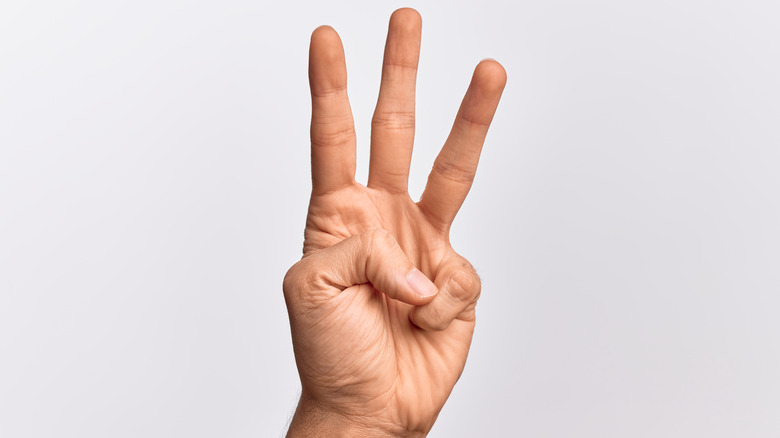Why People Think Celebrities Die In Threes, According To Science
Hollywood is far from immune from superstitions, and harmless lore ranging from never saying the name of a certain Scottish play to more serious concerns about the infamous "27 Club" are well-known both by those in Tinseltown and the public at large. However, in light of the recent deaths of country singer Loretta Lynn, "Murder, She Wrote" star Angela Lansbury, and "Harry Potter" icon Robbie Coltrane, another superstition has come into the limelight: the idea that certain catastrophes — including famous deaths — often occur in threes. Perhaps the most famous example of this phenomenon was the summer 2009, which saw the deaths of Ed McMahon, Farrah Fawcett, and Michael Jackson, which all occurred within the space of 48 hours, per ABC News.
However, while it may seem like bad things happen in trios, data actually shows that tragic events have no pattern whatsoever. In fact, the superstition appears to be nothing more than a self-fulfilling prophecy: People believe bad things come in threes because they want to believe bad things come in threes. The next question is: why?
Why do humans group together tragedy?
The most common explanation for the belief in a trio of misfortune is that humans thrive on patterns. According to Cognition Today, patterns were a vital part of humanity's evolution. Some patterns helped humans survive by refining their basic needs: for example, patterns helped hunters avoid enemies, track their prey, and avoid poisonous foods. Others developed as mankind became more social: for example, a crying baby meant the child was in need, while certain tones of voice corresponded with particular emotions.
However, this human function can sometimes go too far, and make people see patterns where they don't exist in a process called apophenia. The basic idea is that if patterns were a way to help keep humans safe, patterns are particularly sought out in times of fear and sadness.
"Patterns in death, patterns in misfortune — those are things that help us try to understand the universe or reality in a way that makes sense of it," explains John Hoopes, a professor of anthropology at the University of Kansas, who wrote about the concept in Psychology Today. "In general, we're very uncomfortable dealing with randomness."
But why the number three?
The human desire for patterns may also explain why the number three is so important. To quote James Bond author Ian Fleming in "Goldfinger" (via Goodreads), "Once is happenstance. Twice is coincidence. The third time is enemy action," meaning that a trio of events suggests a pattern that would otherwise be dismissed as chance with just a single or double occurrence. "The third data point is a critical point at which our brain goes, 'There's a pattern; that's an intelligent signal, not a random noise,'" explains Michael Shermer, author of "The Believing Brain" (via NBC News).
Perhaps it is the link between the number three and patterns that caused the ancient Greek philosopher Pythagoras, known for his famous theorem, to claim it was the perfect number. Pythagoras saw the number as connected to almost all important things. For example, time is defined by the past, present, and future. Life is defined by birth, life, and death. Even stories follow the pattern, with a beginning, middle, and end (per the Welsh National Opera). The third time's the charm.
Even in today's more modern and less philosophical world, trios are all around us. As noted by NBC News, some examples include stories like the three blind mice; some are in games, like rock-paper-scissors or tic-tac-toe. Trios even manifest themselves in language, with phrases like "location, location, location," "bloods, sweat, and tears" and "the good, the bad, and the ugly." In other words, three is ubiquitous, whether we expect it or not.


